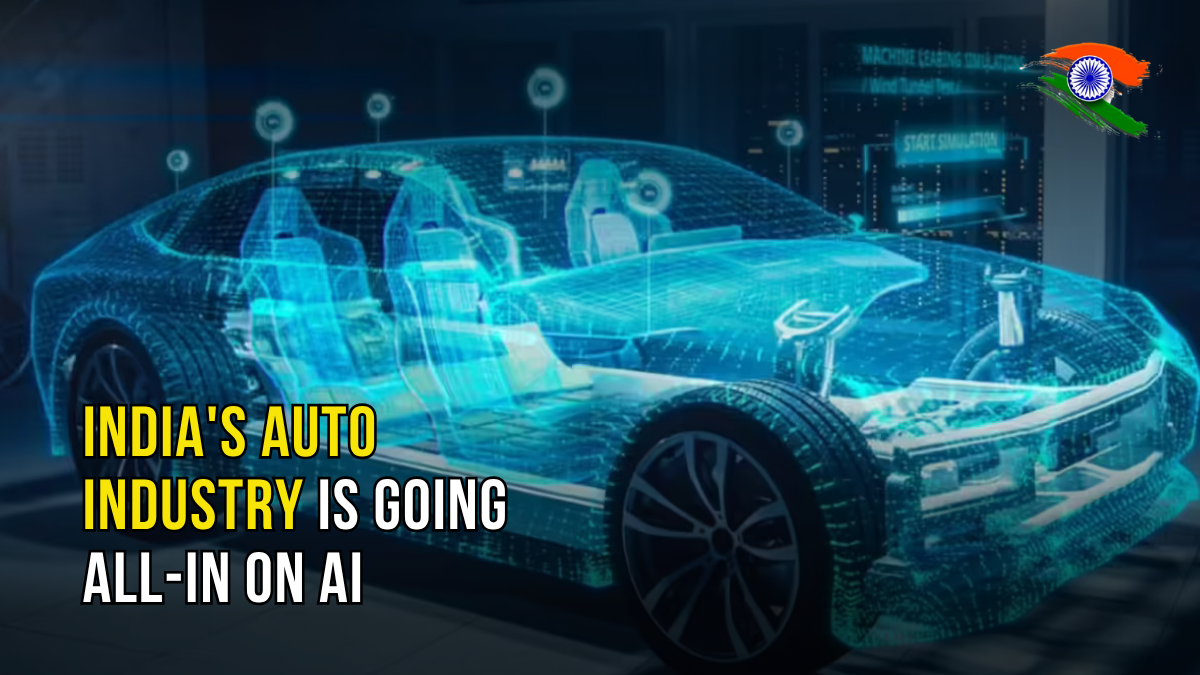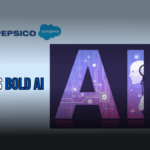India’s automotive sector is experiencing a seismic shift. What started as a traditional manufacturing industry focused on steel and engines is rapidly evolving into a software-driven ecosystem powered by artificial intelligence. This transformation isn’t just changing how cars are made it’s fundamentally altering what a car can do.

The numbers tell a compelling story. Digital and software-related revenue currently accounts for just 15% of the automotive industry’s total income. But according to IBM Institute for Business Value research, this figure is set to explode to over 51% by 2035. For India, one of the world’s top five automotive markets, this represents both an enormous opportunity and a critical challenge.
The AI Revolution Hits Indian Roads
The shift toward Software-Defined Vehicles (SDVs) is reshaping every aspect of the automotive experience. Gone are the days when a car was simply a means of transportation. Today’s consumers expect their vehicles to be intelligent, connected, and personalized to their specific needs and preferences.
This transformation is particularly significant in India, where the automotive landscape faces unique challenges. The country’s overburdened road systems and diverse driving conditions create an ideal testing ground for AI-powered solutions. Advanced driver assistance systems are no longer luxury features they’re becoming essential safety tools that can help navigate complex traffic scenarios and reduce accidents.
Where AI Makes the Biggest Impact
Real-Time Intelligence at the Edge
One of the most promising applications of AI in Indian vehicles is real-time driver monitoring. Advanced systems can now analyze driver behavior, detect fatigue, and provide timely alerts to prevent accidents. This technology is particularly valuable in India, where long-distance driving is common and road conditions can be unpredictable.
Cross-Industry Data Integration
AI is breaking down traditional industry silos. By integrating automotive data with insurance companies and healthcare providers, new service opportunities are emerging. For instance, safe driving behavior tracked by AI systems could lead to reduced insurance premiums, while health monitoring features could alert medical professionals to potential issues during long drives.
Personalized Customer Experiences
The era of one-size-fits-all automotive experiences is ending. AI analyzes consumer preferences and buying behavior to create highly targeted and personalized campaigns. This capability is crucial as Indian automakers compete for market share in an increasingly crowded marketplace.
Enhanced After-Sales Service
Communication barriers between customers and service providers are dissolving thanks to AI. Advanced language processing can translate customer complaints expressed in everyday language into technical specifications, helping service centers resolve issues more efficiently and accurately.
The Business Model Revolution
The automotive industry’s traditional revenue model is undergoing a fundamental shift. Instead of relying primarily on one-time vehicle sales and maintenance services, manufacturers are moving toward recurring revenue streams from digital services and software updates.
This transition presents both opportunities and challenges for Indian automakers. While the potential for increased revenue is significant, companies must first invest in the infrastructure and capabilities necessary to support software-defined vehicles. This includes redesigning electrical and computing platforms, implementing new software development methodologies, and ensuring compliance with evolving regulatory requirements.
Current Market Dynamics
India’s automotive market is experiencing interesting shifts that directly impact AI adoption. The turbocharger industry, for example, is expected to grow at a compound annual growth rate of 14% from FY16 to FY20, reaching Rs 2,600-2,800 crore by FY2020. This growth is driven by increasing demand for both diesel and petrol turbochargers, with petrol turbochargers commanding significantly higher prices at Rs 15,000 per unit compared to Rs 4,000-5,000 for diesel variants.
The market is dominated by international players like Honeywell, Borgwarner, and IHI, which control about 78% of the global turbocharger market. In India, companies like Turbo Energy Private Limited, Honeywell Turbo Technologies, and Cummins Turbo Technologies account for over 90% of domestic turbocharger requirements.
The Infrastructure Challenge
Successfully implementing AI in India’s automotive sector requires more than just advanced algorithms. Companies must adopt a hybrid approach that balances security with scalability. Sensitive data and operations need to remain on-premises while leveraging public cloud resources for computational scalability.
This hybrid strategy is particularly important in India, where data privacy regulations are evolving and companies must navigate complex compliance requirements. The most successful automotive AI implementations will be those that can adapt to local regulations while maintaining the flexibility to scale operations as needed.
Looking Ahead: The Next Two Decades
Passenger car ownership in India is projected to grow exponentially over the next 20 years. This growth, combined with increasing consumer expectations for technology-enhanced driving experiences, creates a massive opportunity for AI-powered automotive solutions.
Indian automakers that embrace software-defined vehicles now will be best positioned to capture this growing market. This means investing in responsible AI development, implementing robust data management systems, and building high-performance computing capabilities that can support increasingly sophisticated automotive applications.
The Global Context
India’s automotive AI revolution is part of a broader global trend. Markets like China and the United States, which together account for over 40% of global passenger vehicle sales, are experiencing similar transformations. The key difference is that India has the opportunity to learn from early adopters while developing solutions specifically tailored to local market conditions.
The success of AI in Indian automotive applications will depend on how well companies can balance global best practices with local needs. This includes developing AI systems that can handle India’s diverse languages, cultural preferences, and driving conditions.
Preparing for an AI-Driven Future
For automotive companies, the message is clear: the transition to AI-powered, software-defined vehicles isn’t optional it’s essential for survival. Companies that fail to adapt risk being left behind as the industry undergoes its most significant transformation since the introduction of the internal combustion engine.
The winners in this new landscape will be those that can successfully integrate AI capabilities while maintaining the reliability, safety, and affordability that Indian consumers expect. This requires a delicate balance of innovation and practicality, cutting-edge technology and proven reliability.
As India’s automotive industry continues its AI-powered evolution, one thing is certain: the vehicles of tomorrow will be fundamentally different from those of today. The question isn’t whether AI will transform Indian automotive it’s how quickly companies can adapt to this new reality and position themselves for success in the software-defined future.
The race is on, and the stakes couldn’t be higher. India’s automotive industry stands at a crossroads, with AI pointing the way toward a more intelligent, connected, and sustainable future.
FAQs: Frequently Asked Questions
1. What is a software-defined vehicle?
A. A software-defined vehicle (SDV) is a car that relies heavily on software to control and improve its functionality. Features such as driver assistance, infotainment, and predictive maintenance are powered by advanced software, often updated over the air.
2. How is AI transforming India’s automotive industry?
A. AI is enabling smarter and safer vehicles by powering autonomous systems, enhancing diagnostics and maintenance, optimizing supply chains, and personalizing user experiences. It is also leading to the development of connected and sustainable mobility solutions.
3. What are the benefits of software-defined vehicles?
A. Software-defined vehicles offer enhanced safety features, better connectivity, improved user interfaces, and reduced environmental impact. They also allow continuous improvement through software updates, ensuring vehicles remain up-to-date with the latest technologies.
4. Will this shift impact employment in the auto industry?
A. Yes, the shift will require upskilling in software and AI development. While traditional roles may decline, new opportunities in software engineering, data analysis, and cybersecurity are expected to emerge.
5. How soon will software-defined vehicles dominate India’s market?
A. Experts predict significant adoption by 2035, influenced by advancements in AI, government policies, and consumer demand for smarter, more sustainable vehicles.
Click HERE For More


